Filters for rough and fine water purification: overview of types + installation and connection rules
The quality, chemical composition and purity of the water supplied by the central water supply, we make a number of well-grounded claims. They are justified by the deterioration of health, the rapid deterioration of equipment and eternal problems with the pressure of water. And our physical and economic condition deserves attention, agree?
To combat these negative circumstances, there is a proven method - you need a filter of rough and fine cleaning. Depending on the tasks to be solved, both individual devices and a group of interconnected devices performing multi-stage processing are mounted.
Here you will find out what kind of work a particular type of device does, in what order they are placed, how they ultimately affect the quality characteristics of water. For a complete perception of information, we have attached visual illustrations and video guides.
The content of the article:
The stages of filtration during water treatment
The first, most important step in water treatment is mechanical cleaning. Coarse purifiers extract particles from 1 micron and higher from water. They perform an irreplaceable function in the filtration process, without which further water treatment is impossible.
Rust, sand, clay particles, scale from old water pipes - everything is removed to get clear water at the exit.
Only after the first stage of pre-filtration, you can begin to eliminate organic impurities, compounds of heavy metals, chemical elements and microorganisms. For this, ultrafine filtration devices are used.
More specifically, the need for cleaning from certain contaminants can be determined only on the basis of the results of analyzes.
To correctly select a filter, you must clearly determine why you need to install it:
- for filtering hot and (or) cold water;
- what kind of contaminants must be cleaned;
- what productivity and volume of loading the filter should have;
- for what purposes - to protect plumbing and equipment or for drinking water and cooking.
It is also necessary to consider where the device will be used - in a private house, apartment, in a boiler room or in an industrial enterprise.
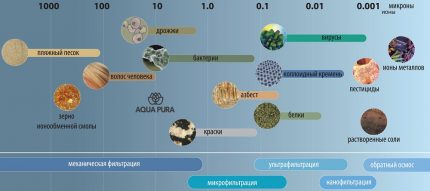
Design and use of coarse filters
Coarse cleaning devices may have different designs, but the principle of operation is similar. Inside they have a removable element, which can be in the form of a metal mesh, disk, cartridge - it performs filtering. There is also an outlet for collecting contaminants. To remove collected debris, the device is periodically washed.
Additionally, devices can be equipped with a pressure gauge to help control the pressure in the system. A drop in water pressure may signal that it is time to change or rinse the cartridge, the mesh.
Filters can also be paired with a gearbox that lowers pressure and dampens water hammer. Some models have valves.
The general properties and differences of different models are in the following characteristics:
- Filter element. For rough cleaning, a metal mesh, a cartridge made of polypropylene fiber, a disk element are often used.
- The method of cleaning up accumulated dirt. The devices are divided into those that are washed in manual mode and self-washed.
- Possibility of use for hot, warm or cold water.
All differences affect the functionality of the devices. Therefore, further - in more detail about their capabilities.
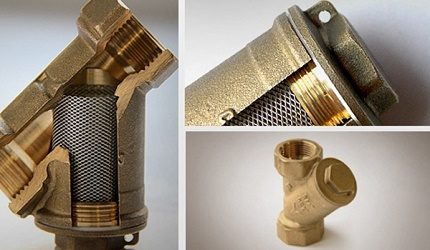
Coarse sedimentation filters
Sedimentary filters include devices with a mesh for filtering. They are mainly made of a metal body (brass or stainless steel) with a direct or oblique branch located directly perpendicular or at an angle. Inside, along the water, a stainless steel mesh is placed.
There are also models of conical axial devices in which the casing is straight and the filter screen has a cone shape and is located inside. Their design provides low hydraulic resistance.
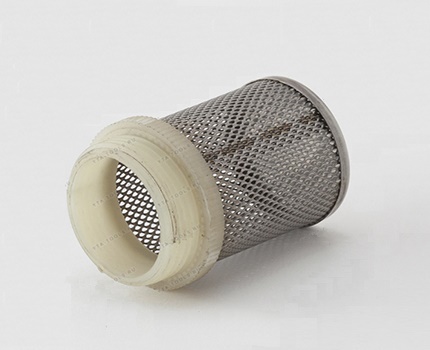
Are installed on a site of a steam heating system before circulation pump, in the water supply system - before water meter. When installing in front of the pump, it is necessary to study the parameters to prevent an increase in the load on the pump. In addition, some manufacturers directly prohibit the installation of any devices in front of their equipment.
The filter in the form of a cylinder made of metal mesh is used for installation at the site of water intake from the source. It is used to prevent large debris from getting into the water supply and to prevent damage to the pump.
Self-washing trunk devices
The design of the filter consists of a housing, a cartridge, a flushing valve. The metal or plastic case has two holes that connect to the water main. The filtering mesh from a stainless steel - removable, detains mechanical impurities from 100 microns.
At the bottom of the housing bowl there is a backwash tap. Some models are equipped with a pressure gauge to monitor the degree of contamination.
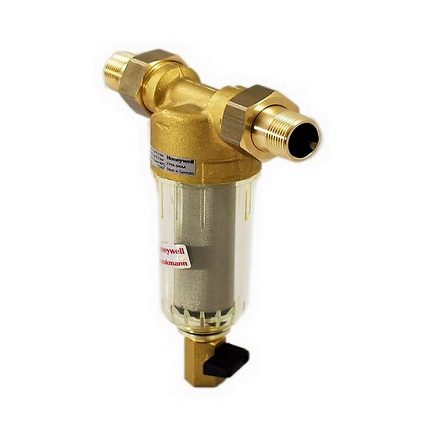
The principle of operation of the device is to pass the stream through the filter element - a removable cartridge made of stainless steel. Mechanical pollution while retained in the grid. Some of them remain in it, and some settle on the bottom of the hull.
A feature of self-washing devices is the ability to remove accumulated dirt without disassembling or unwinding the case. To do this, open the tap located at the bottom of the housing and drain the water into a container or sewer.
Particles of debris are washed away by the stream, and the device continues to work as usual. To remove old deposits on the grid, you can remove it and clean it more thoroughly.
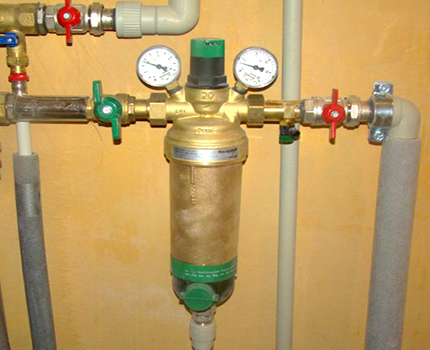
Disk Filter Processing
Devices are used mainly for pre-treatment, prepare water for further cleaning, softening and iron removal. Installed in centralized and autonomous water supply systems, on heating plants, are used in irrigation systems, including drip.
The filter element is a polymer disc, dressed on an axis and tightly compressed between each other. Their surface is covered with small grooves, the dimensions of which determine the degree of purification, comprising from 20 to 400 microns.
The cleaning process is as follows: a stream of water fills the housing and seeps through the flow grooves in the disks, and then is discharged into the outlet. Over time, dirt settles and accumulates on the surface.
Decrease water pressure - a signal that the device again requires cleaning. The degree of clogging can be determined using a manometer.
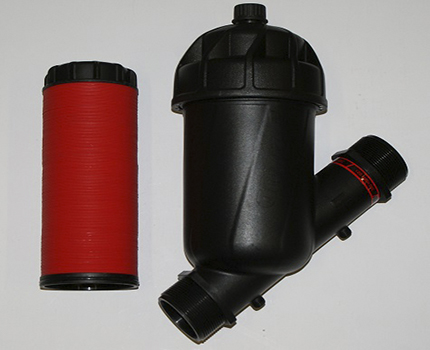
Cartridge filters for fine and coarse cleaning
Cartridge filters are very popular because they have a relatively low cost and can be used to filter industrial and drinking water. They release water from large suspensions - sand, rust, and also from small particles up to 1 μm in size (0.001 mm).
Cope well with the removal of turbidity. Devices with a throughput of 100 to 20 microns are used on main filters for rough cleaning, from 10 to 1 microns are used for the treatment of drinking water.
They are produced in the form of a flask with a cartridge made of polyester or twisted polypropylene thread. It is installed on the pipeline highway. After the cartridge has exhausted its life, it is replaced. The removable element is not to be washed and reused.
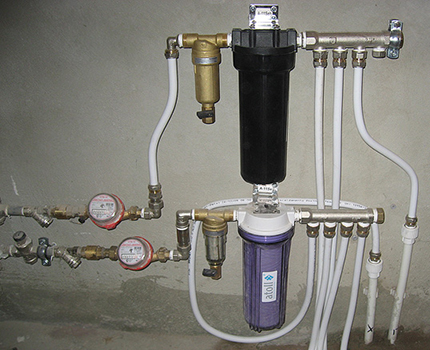
Cartridge Filler Materials
For the manufacture of the cartridge using polypropylene fiber, woven polypropylene rope (cord), cellulose impregnated with polyester, nylon cord. But it was propylene that gained the greatest popularity due to the fact that it has a low cost, is not exposed to chemicals, is not destroyed by the action of biological organisms.
Filters made of polypropylene cord use a special winding method, which allows larger suspensions to settle on the outside of the cartridge, and small particles remain inside the coil. They do not clog very quickly, but the more they exhaust their resources, the more they pass pollution.
For water supply, this is just a positive feature, because a dirty filter does not reduce the pressure in the system. Polypropylene fiber has a foamed structure that contains small bubbles, it is they that accumulate pollution. The disadvantages of the material is manifested in cheap low-quality models.
During water treatment, an external filter ball is clogged in them, while the inner layer may remain clean, that is, not participate in the filtering process. But high-quality cartridges work all over.
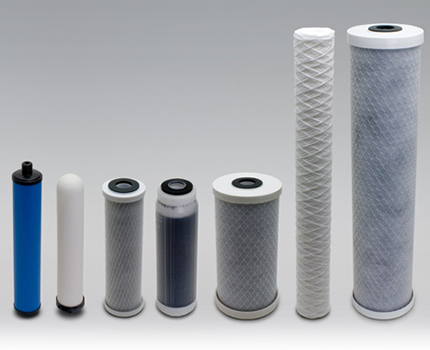
The temperature of use of products made of polypropylene is 1 - 52 ° C. They can be used for cold and warm water. For the treatment of hot water, it is necessary to use cartridges of cotton fibers impregnated with a special substance. They tolerate high temperatures (up to +93 ° C), the effects of microorganisms and various substances.
Ultrafine drinking water purification
After removing solid particles and turbidity from water during rough cleaning, it still contains many substances - dissolved impurities and harmful microorganisms, the presence of which makes it impossible to use it to quench thirst.
Fine filters of the new generation are able to purify water to such an extent that it does not need to be boiled to get drunk.
Those who want to get information about filtering devices from leading manufacturers in the segment of the mass of useful information will find here. We advise you to read an article on this issue.
Sorption filters for cleaning
Sorption filters are used to remove sand, silt, rust fibers, various impurities of 20-40 microns in size, including clay and colloidal iron. They have a high resource and productivity and can accumulate a large number of suspensions.
Able to neutralize unpleasant odors, pathogenic bacteria. Some models of devices enrich water with iodine and fluorine; in some, silver ions are used to neutralize harmful microorganisms.
For absorption, granular activated carbon or aluminosilicates are used. Activated carbon can handle substances such as chlorine, radioactive elements, pesticides, heavy metals, petroleum products and dyes. Absorbs chlorine, calcium, phosphorus, relieving water of excessive hardness.
Aluminosilicates neutralize heavy metals, organic impurities, establish the optimal acid-base balance.
Sorption filters can be manufactured for domestic purposes - in the form of jugs or tanks, and for processing large volumes - like trunk devices. Regeneration is carried out using a reverse current of water. A significant drawback of such filtering systems is the high cost, several times higher than the cost of other installations.
Ion exchange species for water softening
Ion-exchange filters serve to soften water, remove organic impurities. They are made in the form of a plastic or metal (stainless steel) case with ion-exchange material, and containers for a regenerating (saline) solution. The principle of operation is based on the passage of water through bulk filters, where it gets rid of stiffness ions.
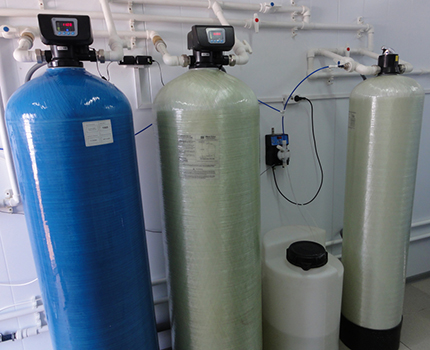
Efficiency depends on the chemical characteristics of water, filter material and room temperature.
The main drawback of such installations is the complexity of maintenance, which requires the use of regenerative tanks, the disposal of used components, and the small filter life of about 200-800 liters.
Membrane (reverse osmosis) filter
Technology membrane filter cleaning based on the passage of water through a large area corrugated material with pores of not more than 3 microns. At the same time, the membrane filter holds impurities on the surface without passing them inside, which significantly increases the resource of the filter material.

Water enters the membrane filter through the inlet pipe with a sealing ring, using a high pressure pump. After passing through all stages of filtration, it is divided into permeate (highly purified water) and concentrate (solution of various impurities), which accumulates in the drainage collector.
The degree of filtration depends on the size of the pores in the membrane:
- up to 1 micron - microfiltration;
- up to 0.1 microns - ultrafiltration;
- up to 0.01 microns - nanofiltration;
- less than 0.001 microns - reverse osmosis.
Reverse osmosis plants perform the highest possible filtration of water, purifying it at the molecular level, removing all microorganisms, salts of heavy metals, organic impurities.
After passing through such a filter, only 20-30% of mineral substances remain in the water, it becomes weakly mineralized, which can be interpreted as dignity and disadvantage.
With the rating of water treatment devices installed under the kitchen sink, will introduce useful article, the content of which we recommend to read.
Filter maintenance and cartridge replacement
Maintenance of the sediment filter involves periodic cleaning of the filter screen. Before starting work, you need to turn off the tap, then unscrew the revision cover and remove the mesh. The frequency of inspections depends on the quality of the water, on the degree of its pollution. After cleaning, it is necessary to reinstall the elements and check for leaks.

To clean the disk filters, they must be removed from the line, open the housing and remove the filter element. When removing the filter, the latch, which presses the discs against each other, loosens and they open. Further, all elements are washed, for a more thorough cleaning, the device is disassembled and cleaned with a brush or sponge.
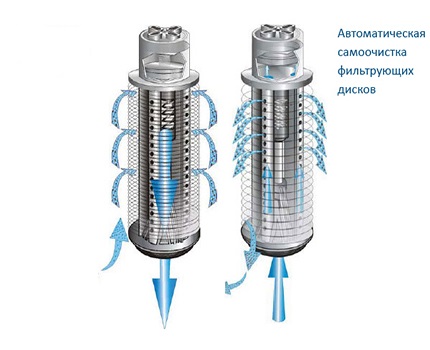
Polypropylene cartridge filters must be replaced after contamination. Manufacturers of different models on the packaging indicate the amount of water in liters that the device can clean.
Objectively, the filter life depends on the state of water in a centralized water supply system or an autonomous source. Therefore, he can serve up to six months. But if the water supply ruptures or for other reasons, it can become clogged even in one day.
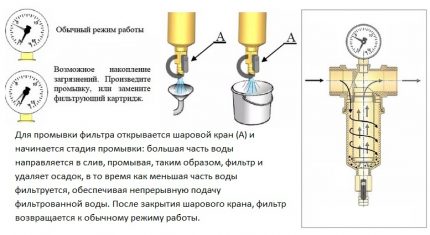
In reverse osmosis fine filters, the replacement time for replaceable elements depends on the type of filler. For prefilters it is half a year, for a coal postfilter - a year, for a membrane - 2 - 2.5 years.
To place replaceable elements correctly, you must remember their original location. Before you start drinking water from a new filter or cartridge, you need to flush the system - drain the water after filling the tank for the first time.
After prolonged shutdown of the system, more than 3 months, and even after replacement of replaceable elements, it is disinfected. If the filter shows a rapid development of microorganisms and fouling of the prefilters, it is recommended to additionally install an ultraviolet lamp complete with the main prefilter.
Rules for installing filtration devices
With a multi-stage cleaning device, the first stage is always a filter that performs rough cleaning. When using several types of systems, first install a device with a large micro-pressure.
If you install filters of different cleaning methods in the wrong sequence, they will not be able to fully perform the task.
Installation of filtering devices in front of pumping equipment is not recommended. An exception is strainers with around zero resistance, which protect the pump from large debris.
The use of any other filters - iron removers, softeners, etc. - will increase the load on the pumping station and cause its premature wear. Installation, adjustment and repair are carried out in the absence of pressure in the water supply.
Installation of sedimentary filters (mud collectors)
The oblique and direct clutch filters are installed in horizontal sections of the water pipe exclusively in the direction of flow. Oblique filters can also be mounted on a vertical pipe if the flow moves from top to bottom.
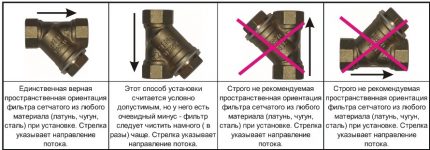
The filter should not be subjected to stresses from vibration, bending, compression and stretching of the pipeline. When installing it, uniform fastening of the fasteners is achieved, if necessary, mount expansion joints and supports that reduce the load.
The correct filter location is the revision cover down. For carrying out preventive maintenance, free space is provided under the device.
Strainers by the method of insertion are divided into coupling and flange. The first type is installed on pipes of small diameters, the second type is used for main water supply systems, interchanges in the plumbing system of apartment buildings. On pipes with a diameter of up to two inches, threaded filters, the so-called American women, are used.
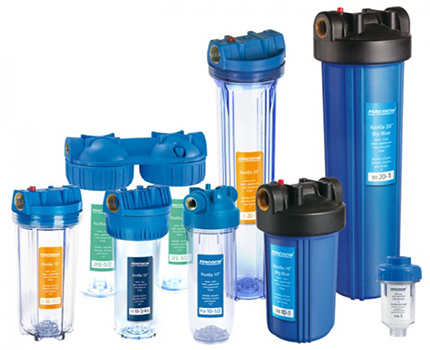
How to install a reverse osmosis system?
Installation of the filter is carried out in an easily accessible place on a horizontal section of the water pipe with the bulb pointing down. When installing a water meter, the filter should be placed in front of it.
Installation is carried out in the following sequence:
- Anaerobic sealant is applied to the connecting thread, filling all the grooves with an even layer and leaving it to solidify for 15 minutes.
- Next, attach the fasteners to the filter, paying attention to the direction of the flow of water in the water supply.
- Attaching the filter fasteners to the wall, and making sure that the device bends coincide with the position of the pipe, mark the places for the holes.
- Drill holes and insert the dowels, then, using screws, screw the holder with the filter to the wall.
- To connect the filter taps to the line, cut the pipe and bend it to align its axis with the axis of the filter. To prevent the pipe from breaking when it is bent, a special conductor is inserted into the middle.
- Then, a crimp ring and nut are put on the pipe, the fitting is inserted (all the way). The compression ring is tightened close to the fitting and the nut is tightened.
- Connect the fitting to the filter and tighten the union nut tightly tightening with a wrench.
After installation, open the water, check for leaks. For ease of repair and maintenance, shutoff valves are provided on both sides of the device.
Reverse Osmosis Filter Connection
The installation of the treatment system consists in the assembly of individual elements and does not require special tools. Therefore hold reverse osmosis unit even a person who has never done this can.
The manufacturer recommends placing the filter under the kitchen sink.In order to comfortably collect filtered water, a separate tap is installed. To install it, you will have to drill a hole in the corner of the sink or in the area of the countertop near the sink.
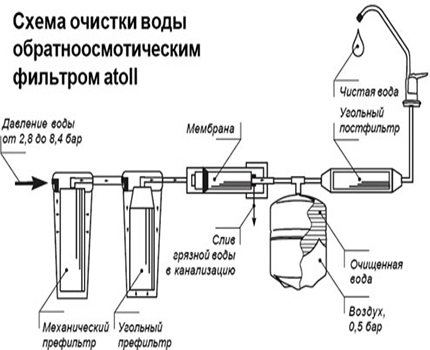
The reverse osmosis filter is assembled as a designer. Installation consists of the following stages:
- installation of a drinking tap and its connection to the filter;
- connection to the cold water pipeline;
- installation of the ball valve of the tank and the drain clamp;
- commissioning and flushing the system.
For good performance and performance of the reverse osmosis filter, it is necessary to ensure a normal pressure in the system. If the water pressure in the supply pipe does not exceed 2.8 bar, it is recommended to install a booster pump.
It is installed before the first filter in the gap of the incoming tube. When using a pump, it is necessary to install a high pressure sensor - it automates the process of turning the equipment off and on.
Owners of their own pools will receive a lot of useful information about filtering plants in the next articlewhich we recommend that you familiarize yourself with.
Conclusions and useful video on the topic
Clip # 1. How to choose a filter according to the degree and method of cleaning:
Clip # 2. How to insert a filter into a water supply system:
Clip # 3. Reverse osmosis filter installation and cartridge replacement:
When choosing a device for water treatment, the question is not what filter to install - for rough or fine cleaning. It is more correct to ask the question, for what purposes water will be used and what result should be achieved.
It is necessary to use devices for water filtration, starting from rough cleaning and ending, if necessary, with the finest one, which will remove impurities to the smallest particles.
Those wishing to share experiences, express opinions, ask questions, note shortcomings in the material presented, we invite you to write comments. You can leave them in the block located under the text of the article.

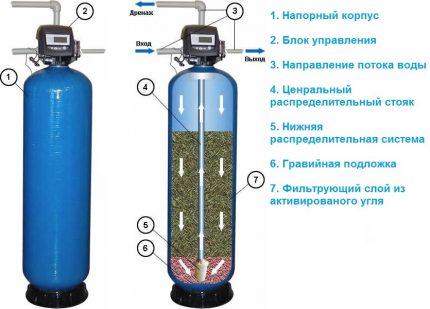
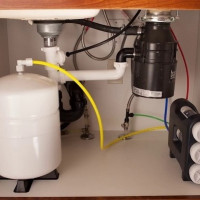 How reverse osmosis works: the principle of operation of fine water purification devices
How reverse osmosis works: the principle of operation of fine water purification devices 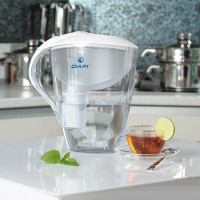 Water purification filter for a summer residence: selection tips + an overview of the best brands
Water purification filter for a summer residence: selection tips + an overview of the best brands 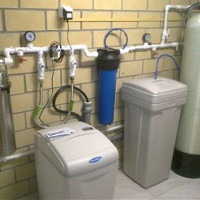 Water purification systems for a country house: filter classification + water purification methods
Water purification systems for a country house: filter classification + water purification methods  Types of water meters: overview of various types + recommendations for customers
Types of water meters: overview of various types + recommendations for customers 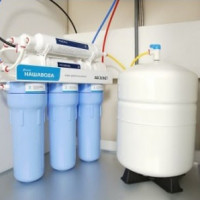 Reverse osmosis: the harm and benefits of membrane purification of tap water
Reverse osmosis: the harm and benefits of membrane purification of tap water 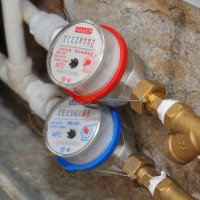 How to install water meters yourself: installation and connection diagram of a typical meter
How to install water meters yourself: installation and connection diagram of a typical meter  How much does it cost to connect gas to a private house: the price of organizing gas supply
How much does it cost to connect gas to a private house: the price of organizing gas supply  The best washing machines with dryer: model rating and customer tips
The best washing machines with dryer: model rating and customer tips  What is the color temperature of light and the nuances of choosing the temperature of the lamps to suit your needs
What is the color temperature of light and the nuances of choosing the temperature of the lamps to suit your needs  Replacement of a geyser in an apartment: replacement paperwork + basic norms and requirements
Replacement of a geyser in an apartment: replacement paperwork + basic norms and requirements
I also set a filter for myself in the country, but I set it after they changed the pipes and saw what a coating there was on them, that you simply could not do without a filter. I installed a fine filter for myself, it cleans water well, it used to come across some small particles in water, and after installing the filter, the water became like a tear. Now I’m thinking about putting a filter in my apartment.
Sorry for such an amateurish question, but does tap water always need filtration? As for the coarse filters, everything is clear - without them there is a high risk of quick wear or damage to home appliances - washing machines, dishwashers, etc. But is it necessary to do finer cleaning? What indicators of the presence of impurities can be considered critical in order to spend money on a complex and not very cheap filtration system? And at times it seems that constant emphasis on the poor quality of tap water is being lobbied by filter manufacturers and bottled water suppliers.
Unfortunately, in most areas of our immense almost everywhere there are problems with water. Somewhere they are insignificant, somewhere, without exaggeration, catastrophic. Water can be tested independently by several methods. For example, the content of salts is very simple - drip tap water onto a glass surface and wait for the water to evaporate. If there are white stains, you can safely think about the filter.
You can pour a glass jar of water and leave for several days in a dark place with the lid closed. If a green coating forms, it means that there are a lot of microorganisms in the water and it's time to run after the filter. In general, take samples and go to the SES - there they will tell you exactly what you are drinking.
Hello. Take a plate with normal indicators of water, hand over your water for analysis, and then compare. It is not so expensive and at the same time you will find out exactly what you are drinking.
As for bottled water, recently Roskontrol tested the water of 12 major manufacturers, and it turned out that safe water is very rare in our country, but not at all in terms of mineral value.
I installed myself a cleaning system in the house. Water has become much tastier, softer. There is no more limescale left on our dishes, well, this is my wife saying so. Even the food tasted better with purified water. Installed quickly, quality on top. Now I recommend that all friends and acquaintances also install a system for water purification.